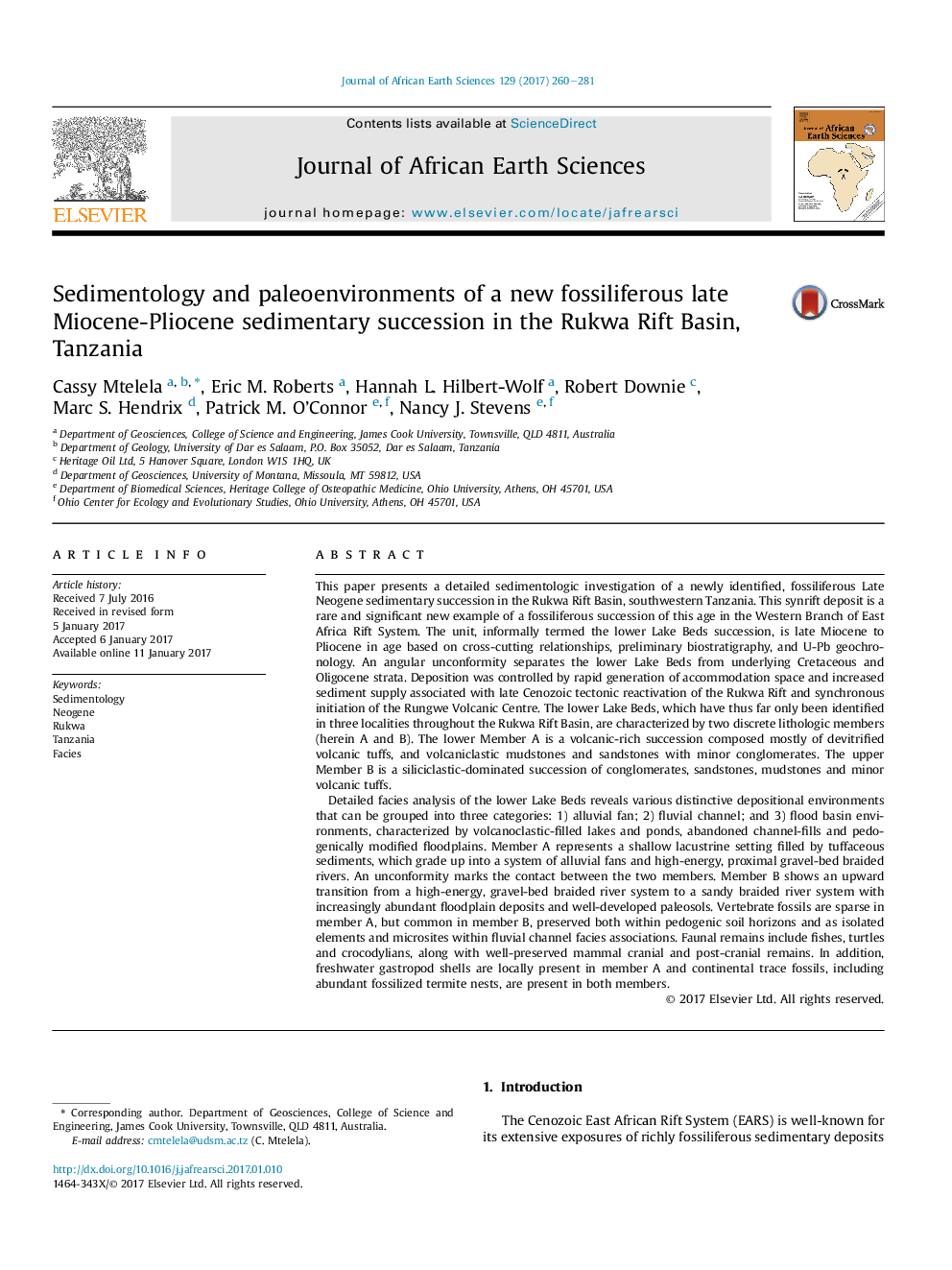| Article ID | Journal | Published Year | Pages | File Type |
|---|---|---|---|---|
| 5785693 | Journal of African Earth Sciences | 2017 | 22 Pages |
Abstract
Detailed facies analysis of the lower Lake Beds reveals various distinctive depositional environments that can be grouped into three categories: 1) alluvial fan; 2) fluvial channel; and 3) flood basin environments, characterized by volcanoclastic-filled lakes and ponds, abandoned channel-fills and pedogenically modified floodplains. Member A represents a shallow lacustrine setting filled by tuffaceous sediments, which grade up into a system of alluvial fans and high-energy, proximal gravel-bed braided rivers. An unconformity marks the contact between the two members. Member B shows an upward transition from a high-energy, gravel-bed braided river system to a sandy braided river system with increasingly abundant floodplain deposits and well-developed paleosols. Vertebrate fossils are sparse in member A, but common in member B, preserved both within pedogenic soil horizons and as isolated elements and microsites within fluvial channel facies associations. Faunal remains include fishes, turtles and crocodylians, along with well-preserved mammal cranial and post-cranial remains. In addition, freshwater gastropod shells are locally present in member A and continental trace fossils, including abundant fossilized termite nests, are present in both members.
Keywords
Related Topics
Physical Sciences and Engineering
Earth and Planetary Sciences
Geology
Authors
Cassy Mtelela, Eric M. Roberts, Hannah L. Hilbert-Wolf, Robert Downie, Marc S. Hendrix, Patrick M. O'Connor, Nancy J. Stevens,
